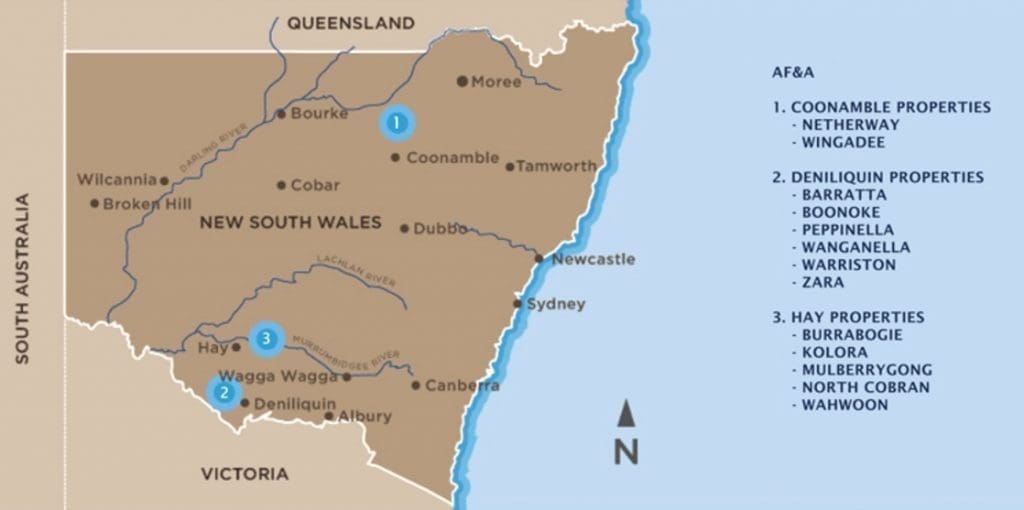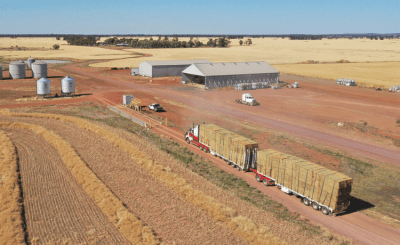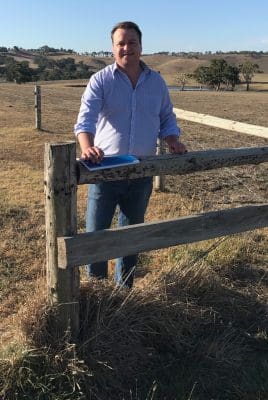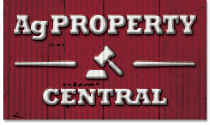IN GRAIN Central’s final weekly property review for the year, experts from three rural property agencies reflect on the year that was.
Mark Barber, Elders
Mark Barber is in charge of agribusiness investment services for Elders.
He said 2024 was a challenging year for rural property sales.
“Livestock prices had severely declined in late 2023 and were slowly recovering, seasonal conditions in the south were poor, and there was no clear direction on interest rates.”

Mark Barber.
Mr Barber said this shook confidence generally and lead to buyers being cautious.
“As the year progressed, livestock prices improved and there were mostly good to average seasonal conditions in New South Wales, Queensland and parts of Western Australia.”
Mr Barber said good quality properties in sought after areas sold well, albeit with more time on market.
“Family farmers with robust balance sheets were strong competitors, but finance took longer to secure where needed.
“On the other hand, corporate investors were successful in raising capital, but high property values made it difficult to hit their return hurdles.”
For Mr Barber, the standout cropping-cotton property sale was the Australian Food & Agriculture Company portfolio, offloaded in September to the United States Agriculture & Natural Solutions Acquisition Corporation for $780 million.

It comprised 13 NSW farms across 225,405ha, and three hubs in the Deniliquin, Coonamble and Hay districts.
Irrigated cropping layouts over 11,000ha were growing rice, cotton, winter cereals and forage using bore water and 54,693ML of water entitlements from the Murrumbidgee and Murray river systems.
“The sale demonstrated the depth of the Australian market and showed international investors there is liquidity at the top end of the market in Australia.”
“This should give investors confidence they can build high quality property portfolios in Australia,” he said.
In terms of regions, Mr Barber said WA was a solid consistent performer in 2024.
“By mid-year, prices had risen 3 percent year on year; a solid harvest, the third-largest receivals for CBH, should see property prices remain firm into 2025.”
According to Mr Barber, the most active buyers were larger family farmers who, with strong balance sheets from recent property price appreciation, were competitive for the right asset.
“Institutional and corporate investors, particularly from North America and Europe, were active but often found the elevated prices challenging when calculating their required financial hurdles.
“Further reductions in the Australian dollar against the US dollar could encourage more offshore buying.”
2025
In 2025, Mr Barber expects similar conditions to those experienced in the second half of 2024.
“If trading conditions remain the same, I would expect to see property prices hold firm with some strength in Victoria and South Australia – if there is a good autumn break.”
“Australian agriculture is still a good investment. It offers a secure capital and a reasonable return. Yes, there has some been some volatility in commodity prices and seasonal conditions, but the low property turnover shows farmers remain confident.”
Mr Barber said key drivers will be the impact on commodity prices under the new United States President, as well as interest rates and seasonal conditions.
“Australian agriculture will keep an eye on the impact on commodity prices if the US impose tariffs.”
Donald Trump has foreshadowed on day one of his presidency he will slap China, Mexico and Canada with hefty new tariffs in a bid to force them to crack down on illegal immigration and drug smuggling into the US.
“China is one of the biggest importers of Australian commodities and imposing tariffs could slow growth and Chinese demand. With property prices and commodity prices closely correlated, a contraction in commodity prices could impact confidence and possibly property values.”
Danny Thomas, LAWD
During 2024, LAWD senior director Danny Thomas noticed a widening in the gap between institutional and non-institutional, or family farm, transactions, saying it was much tougher to sell properties in the sub $40-million price bracket.
“It has been a challenge taking a property to market in a district where there is an absence of strong neighbours or nearby larger producers looking to expand, and then finding the right buyer to support existing levels of value for family farms.”

Danny Thomas.
Mr Thomas said across some geographies there has been a price adjustment, while other regions have held firm level.
“Demand is still strong for properties above $40m, particularly for high quality assets where institutions have already invested, including the NSW Riverina, north along the Newell Highway, and into the Northern Rivers.”
“Areas that have been drier have been more difficult to move, especially Tasmania, western Victoria and south-east South Australia.”
When it comes to large family farmers, Mr Thomas said 2024 was a quieter purchasing year.
“Mostly, they want to buy with debt and the numbers have been difficult to stack.
“As a result, some backed off due to higher interest rates, others had completed deals the previous year and a number of producers were consolidating.”
Mr Thomas singled out the sale of the southern Qld’s 26,855ha Worral Creek Aggregation, boasting 65,900ML of water entitlements, as the most significant cropping sale in 2024.
The institutional-grade irrigation and dryland farming asset, underpinned by first-class infrastructure, water security and reliability, was purchased by Warakirri Asset Management and Alkira Farms for $360M bare.
Aside from the Worral Creek Aggregation and the Sunshine Farms Aggregation (above), Mr Thomas said the sale of Timberscombe was impressive in terms of the size and the value achieved.
In April, Duxton Farms accepted a $70 million offer from PSP-owned Altora Ag for the 8432ha Timberscombe, one of the largest contiguous dryland cropping holdings in the southern half of New South Wales.
Situated in the state’s south- west slopes region, Timberscombe is 27km east of West Wyalong and 70km south-west of Forbes.

In April 2024, Duxton Farms sold Timberscombe at Back Creek near Forbes to Altora Ag. Photo: LAWD
The turn-key operation has mostly open and level land with black self-mulching and brown clays growing wheat, barley, canola and chickpeas on 7794 arable hectares. Its improvements include 8498 tonnes of grain storage.
Mr Thomas identified the Lachlan Valley region, south of Forbes in central western New South Wales, as particularly active from the end of last year to the start of this year.
“Prices for those irrigation areas, offering both ground water and surface water, have been very strong and represent value for money compared to the rest of the market.”
Mr Thomas said the Sunshine Farms Aggregation was a great deal.
In March, the 14,075ha of irrigated and grazing country across five non-contiguous holdings near Forbes was offloaded by the AAM Investment Group and sold to Nuveen for $96M including 14,766ML of water entitlements.
The aggregation has high-quality clay loam soils growing cotton, wheat, barley, faba beans and fodder to support beef, wool and prime lamb production.
Mr Thomas said the Sunshine sale followed a series of other regional (Lachlan Valley) deals negotiated in 2023 that, combined, achieved in excess of $200m over a 12-month period.
- August 2023 – The highly productive irrigated and dryland cropping and grazing opportunity Jemalong Station was purchased by Lawson Grains for around $85M. The 13,498ha produces high value crops including cotton, winter cereals and oilseeds, fodder, beef cattle, wool and lambs;
- November 2023 – 3786ha blue-ribbon irrigation enterprise Fairholme Aggregation was purchased by agricultural asset management company Impact Ag for more than $30M including extensive water entitlements;
- March 2024 – 14,438ha Borambil Station, near Condobolin, was purchased by two local producers for a combined $43.57M, excluding the 3500ML of water entitlements. With an estimated carrying capacity of 40,000DSE, the aggregation offers sheep and lamb production, backgrounding cattle and dryland and irrigated cropping.
What lies ahead?
While the 2024 property market drew breath, Mr Thomas expects 2025 will be very busy.
“It will be a step change. Increasing institutional activity will result in a much busier market, as more deals are completed. A wall of overseas capital is coming into Australia from mostly North America and Europe, with next to no activity out of China.”
“In terms of North America and Europe, Australia represents good value for money, particularly given the exchange rate,” Mr Thomas said.
“In addition, the nature-based solutions market is dragging more money into Australia. People can access carbon credits and biodiversity offsets to meet some of their investment requirements around sustainability.”
“If more activity is met with less supply, then property prices could rise.
“However, the current pent-up supply means the market and values will track sideways for the time being.”
Mr Thomas believes the balance of the market, the family farms, will kick in again during 2025.
Jesse Manuel, Colliers Agribusiness
Jesse Manuel, national director of transaction services at Colliers Agribusiness said despite lower transaction volumes, while sellers and purchasers adjusted to the new environment of the higher cost of debt, enquiry remained strong throughout the year.
“At the pointy end of the sale process, particularly in the second half of the year, there have been increased levels of competitive tension, especially in regions where recent sales have occurred.

Jesse Manuel.
This has allowed buyers and their financiers to get comfortable with where values sit.”
In regions that remained tightly held during and since the peak of the market in 2022, Mr Manuel noted some standout sales where pent-up demand has outweighed supply.
“Quality assets in Central Queensland and also Central Australia have been examples of this.”
“Moderate rainfall cropping regions of 400mm and above, in areas where buyers can access scale, have seen a lot of activity with a number of institutional-scale properties transacting in northern New South Wales and southern Queensland,” he said.
Mr Manuel said the 2024 buyer profile continued to be evenly divided between private families and the corporates and institutions.
“Traditionally, when the cost of funding increases, institutional investors with cash become the most active buyers in the market. However, family farming operators have also remained active because they are nimbler when it comes to undertaking due diligence.”
Mr Manuel said one noticeable change in 2024 was the increase in enquiry and purchasing mandates from off-shore high net-worth individuals.
“Especially from the United States where the exchange rate makes for a very compelling case for investment in Australia.”
Mr Manuel said the weight of institutional capital looking to be deployed, especially in the grains sector, should see some significant transactions for dryland and irrigated cropping assets.
“I believe many of these assets will be traded between institutional investors, as some look to recycle capital or expand portfolios.”
2025 property prices
Mr Manuel said different regions are at varying stages of the property price cycle, depending on what the supply situation has been doing over the past 12 to 18 months.
“The most positive outlook is for properties located in the most reliable rainfall regions and an interest cut would certainly help!”
Looking at the 2025 rural property market, Mr Manual said the supply and demand dynamic is critical.
“Irrespective of the broader macro-economic conditions, many primary producers have good equity in their assets and those who have wanted to expand haven’t been able to due to the lack of opportunities coming to market.”
Mr Manuel believes this pent-up demand will translate into some positive sale results across the country.
This is Grain Central’s final weekly property review for 2024.
I wish all readers and our property industry contacts across Australia, a Merry Christmas and a safe and happy New Year.
Our weekly property reviews will return in January 2025.
In the meantime, readers may be interested in perusing our Properties for Sale listings or our Recent Property Sale Results – both featuring easy-to-use search functions – Linda Rowley, property editor.
Grain Central: Get our free news straight to your inbox – Click here

HAVE YOUR SAY